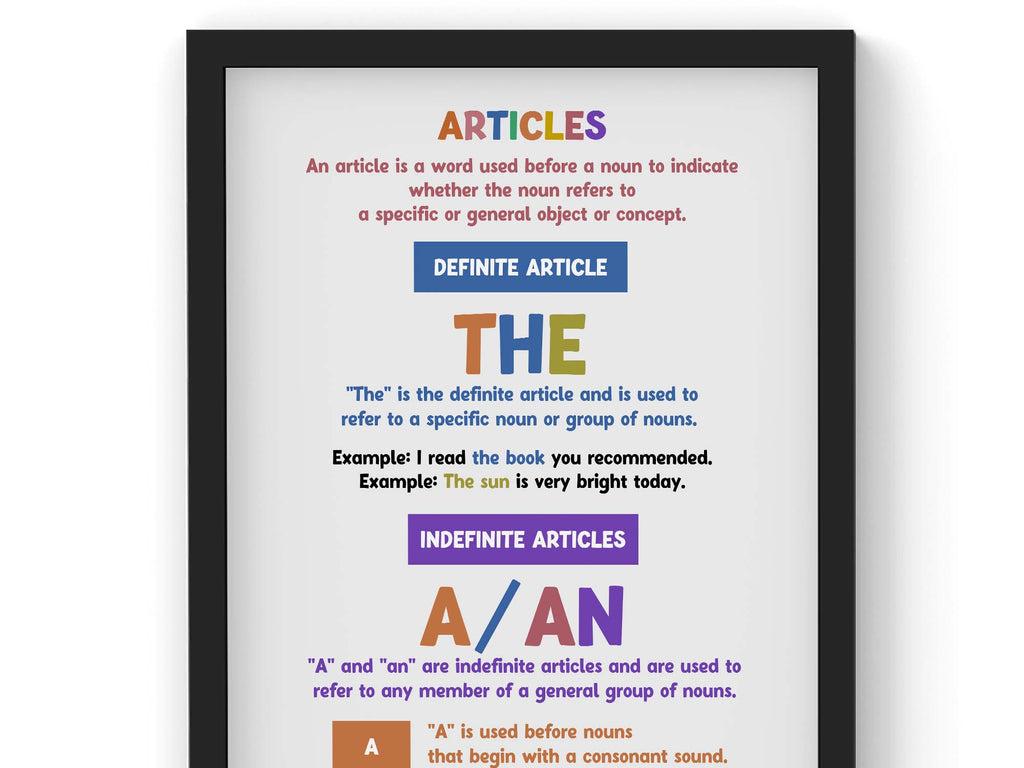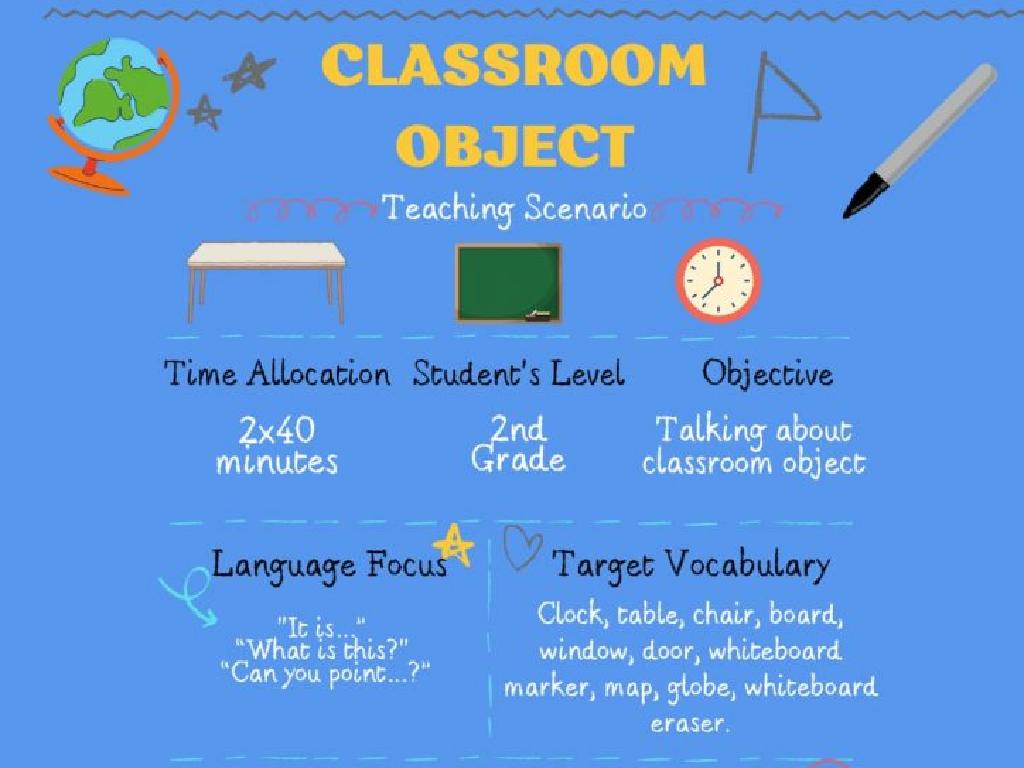Distinguish Facts From Opinions
Subject: Language arts
Grade: Fifth grade
Topic: Summarizing
Please LOG IN to download the presentation. Access is available to registered users only.
View More Content
Mastering Summarizing: Facts vs. Opinions
– Summarizing: What is it?
Condensing information into a shorter version, keeping key points.
– The value of summarizing
Helps us remember and understand main ideas better.
– Facts vs. Opinions
Facts are verifiable truths; opinions are personal beliefs.
– Practice distinguishing them
We’ll learn to identify factual statements and personal thoughts.
|
This slide introduces the concept of summarizing and its significance in enhancing comprehension and retention of information. Summarizing helps students distill the essence of a text and remember its key points. It’s also crucial to differentiate between facts, which are statements that can be proven true or false, and opinions, which are based on personal feelings and beliefs. Understanding this distinction is important for critical reading and thinking. In the next class, we will engage in activities that will allow students to practice summarizing texts and distinguishing between factual information and opinionated statements.
Understanding Facts
– Define a fact
– A fact is something that can be proven true.
– Characteristics of facts
– Facts are verifiable, objective, and unaffected by emotions.
– Examples of facts
– ‘The Earth orbits the Sun’ or ‘Water freezes at 0°C.’
|
This slide aims to help students understand what a fact is. Begin by defining a fact as information that is true and can be verified through evidence or observation. Discuss the characteristics of facts, emphasizing that they are objective, can be proven, and are not influenced by personal feelings or opinions. Provide clear examples of facts, such as scientific truths or historical events, to illustrate the concept. Encourage students to think of their own examples and to differentiate between what can be proven and what is a personal belief or opinion. This will lay the groundwork for understanding the difference between facts and opinions in various texts.
Understanding Opinions
– Define an opinion
– A view or judgment formed about something, not necessarily based on fact.
– Traits of opinions
– Opinions are personal, can vary, and are often influenced by feelings or beliefs.
– Opinion versus fact
– Opinions are subjective and can be agreed or disagreed with, unlike facts which are objective.
– Examples of opinions
– ‘Pizza is the best food.’ or ‘Summer is better than winter.’
|
This slide aims to help students understand what an opinion is and how it differs from a fact. Begin by defining an opinion as a personal belief or judgment that can be influenced by one’s feelings or experiences. Discuss the characteristics of opinions, emphasizing that they are subjective and can vary from person to person. Contrast opinions with facts, which are objective and verifiable. Provide clear examples of opinions, and encourage students to think of their own examples. This will help them recognize opinions in texts and conversations, an essential skill for critical thinking and summarizing.
Comparing Facts and Opinions
– Understanding facts vs. opinions
– Facts are statements that can be proven true or false. Opinions express personal feelings or beliefs.
– Clues that signal an opinion
– Words like ‘believe’, ‘feel’, or ‘think’ often suggest that a statement is an opinion.
– Activity: Spot the difference
– Practice with real examples
– Use sentences from familiar stories or current events.
|
This slide is aimed at helping students differentiate between factual statements and opinions. Begin by explaining that facts are verifiable and can be proven, while opinions are based on personal feelings and cannot be proven true or false. Highlight clue words that often indicate an opinion. For the activity, provide students with a mix of sentences and ask them to identify which are facts and which are opinions. Encourage them to justify their answers. This exercise will enhance critical thinking and analytical skills. For the teacher: Prepare a list of sentences beforehand, and consider using interactive methods like thumbs up/down for quick assessments or group discussions for deeper engagement.
Summarizing with Facts
– Use facts for text summaries
– Focus on main points and evidence in the text, avoiding personal feelings or judgments.
– Keep summaries objective
– Objective summaries are unbiased and based on factual information from the text.
– Practice factual summarizing
– Summarize a given paragraph by extracting only the factual information.
|
In this lesson, students will learn how to create summaries that are based strictly on facts presented in a text. Emphasize the importance of distinguishing between what is a fact and what is an opinion, especially when summarizing. Teach students to identify key points and supporting details that are factual and can be verified. During the practice activity, provide a paragraph and guide students to extract only the factual content to create an objective summary. This will help them understand how to maintain neutrality and avoid inserting personal bias into their summaries. Encourage students to share their summaries and discuss the factual elements they chose to include.
Summarizing with Opinions
– Opinions’ impact on summaries
– Opinions can color summaries with personal views
– Appropriate times for opinions
– Include opinions to express personal perspective or critique
– Practice summarizing with opinions
– Summarize a story and weave in your viewpoint
|
This slide aims to teach students how personal opinions can affect the way they summarize texts. It’s important for them to understand that while summaries typically focus on the main facts of a story, there are times when including an opinion can be appropriate, such as when writing a review or personal response. During the practice activity, encourage students to identify the main points of a story and then add their own opinion. This will help them learn to distinguish between objective and subjective statements. The teacher should provide guidance on maintaining a balance between factual summary and personal insight.
Group Activity: Fact or Opinion?
– Work in groups on text analysis
– Identify facts and opinions
– Facts are statements that can be proven true, opinions are beliefs or views.
– Discuss summary differences
– Compare how each group’s understanding varies.
– Present summaries to class
|
This group activity is designed to enhance students’ critical thinking by distinguishing between factual statements and opinions within a text. Divide the class into small groups and provide them with a passage to analyze. Each group should identify which parts are facts and which are opinions. Afterward, facilitate a discussion where groups explain how they reached their conclusions and why their summaries might differ from others. This will help them understand the subjectivity in interpreting texts. Finally, have each group present their findings to the class, fostering public speaking skills and reinforcing the lesson’s objectives. For the teacher: prepare diverse texts with clear examples of facts and opinions, guide the discussion to ensure all students participate, and provide feedback on their presentations.
Class Activity: Summarizing with Facts
– Read a short story as a class
– Find facts and opinions in the text
– Facts are things that can be proven; opinions are beliefs or feelings
– Write a factual summary of the story
– Use only the proven facts to summarize the story
– Share summaries and discuss
– Listen to different summaries to understand various perspectives
|
This activity is designed to help students practice distinguishing between facts and opinions within the context of a story. Start by reading a short story together, ensuring that it contains a mix of factual information and characters’ opinions. After reading, work with the students to identify statements of fact and opinion. Guide them to use only the factual information to write a brief summary of the story. Once completed, have students share their summaries with the class and discuss how focusing on facts affects the way a story is retold. This will reinforce the concept of summarizing and the importance of differentiating between facts and opinions.
Conclusion: Facts vs. Opinions in Summaries
– Reviewing fact vs. opinion importance
– Understanding the difference helps in critical thinking and effective communication.
– Reflection on summaries’ nature
– Using facts leads to objective summaries, while opinions provide a subjective view.
– Homework: Article summaries practice
– Find an article, write one summary with only facts, and another with your opinions.
|
As we wrap up our lesson, it’s crucial for students to grasp why distinguishing between facts and opinions is essential. It’s a skill that aids in developing critical thinking and allows for clear communication. Encourage students to reflect on how the nature of a summary changes depending on whether it’s based on facts or opinions. For homework, students should find a news article or a story to practice writing two types of summaries. This exercise will help them understand the contrast between objective and subjective summarization. In the next class, we can discuss how the tone and content of the summaries differ and why both types of summaries might be valuable.





